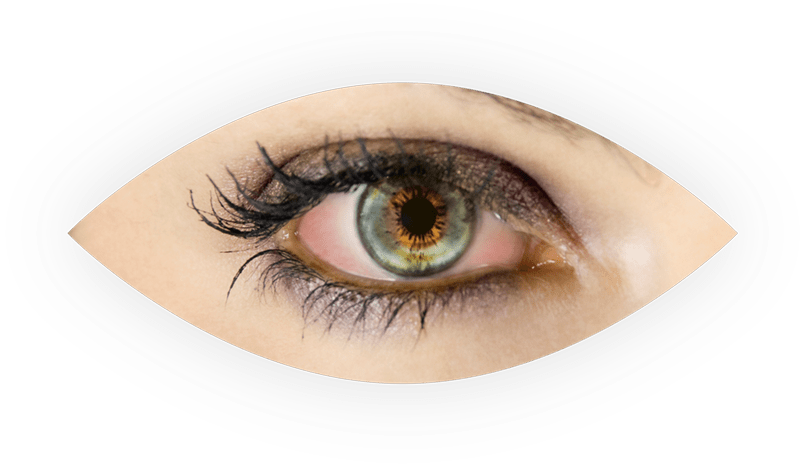Dry Eyes – One of the most common eye diseases
The dry eye syndrome is one of the most common diseases in ophthalmology. The dry eye syndrome affects one in six Germans. The result is an unstable tear film that potentially damages the ocular surface and is accompanied by inflammation. If left untreated, dry eyes cause symptoms like burning, itching and a foreign body sensation. Paradoxically, watery eyes can also occur. In addition, dry eyes can lead to considerable visual impairment as well as a reduced quality of life.

Tear film
In dry eye patients the tear film is affected. The healthy tear film consists of three layers: a mucus-containing layer (mucin layer) that rests directly on the cornea, an aqueous phase lying on top of it and an outermost lipid (oil) layer.
The tear film’s functions are:
- providing the cornea with nutrients
- lubricating and protecting the ocular surface from infections
- maintaining a smooth refractive surface on the cornea to ensure optimal vision
- formation of a gliding surface to facilitate the movement of the eye lids
The functions of the lipid layer are:
- counteracting the premature evaporation of the underlying aqueous phase, thereby preventing dry eyes.
- stabilising the aqueous phase of the tear film, which prevents watery eyes.
However, the lipid layer is dependent on the meibomian glands and blinking . The meibomian glands are located in the upper and lower eyelid and exit onto the respective eyelid margins. These glands produce the oily secretion that makes up the lipid layer and deposit it as small droplets onto the upper and lower lid rim. During the blink, i.e. when the upper and lower lid meet, these droplets merge into one. Upon reopening of the eyes the lipid layer is distributed evenly over the tear film . Thus, each blink serves to renew the lipid layer.

The causes of dry eyes are manifold
Dry eyes are caused by various factors. These include diseases (e.g. diabetes mellitus), eye surgery and chemotherapy. Furthermore, hormonal imbalance plays a role, especially in pregnant or menopausal women and those on oral contraceptives (the “pill”). Drugs as well as our lifestyle (intensive screen activity, low humidity, air conditioning, smoking etc.) can also cause dry eyes.
Women with laptop: sebra – stock.adobe.com
Air conditioner: naypong – stock.adobe.com
Forms of dry eyes
In the classification of dry eyes, a distinction is made between two forms of dry eyes.
- Volume deficiency. It is caused by a reduced production of the aqueous phase and consequent reduction in tear film’s volume causing dry eyes
- Compromised lipid layer or evaporative dry eyes. This form leads to an increased evaporation as well as destabilisation of the tear film and thus dry eyes. In addition, the tear film is destabilised, which can lead to watery eyes.
Both forms lead to a reduction of the tear film and can also occur simultaneously. Subjective complaints of those affected can be a guide in determining which form of dry eyes is present (see table1).
1 based on Kunert K. S. et. al. Trockenes Auge, Kaden Verlag, 2016: 53
Symptoms associated with the different forms of dry eyes1
| Burning sensation |
| Irritated eye lid margin |
| Paradoxically watering eyes |
| Contact lens incompatibility |
| Problems during screen-based activity |
| Foreign body sensation |
| Conjunctival redness |
| „tired“ eyes |
| Increased glare sensitivity |
| Dry mouth |
Header image: iofoto – stock.adobe.com


